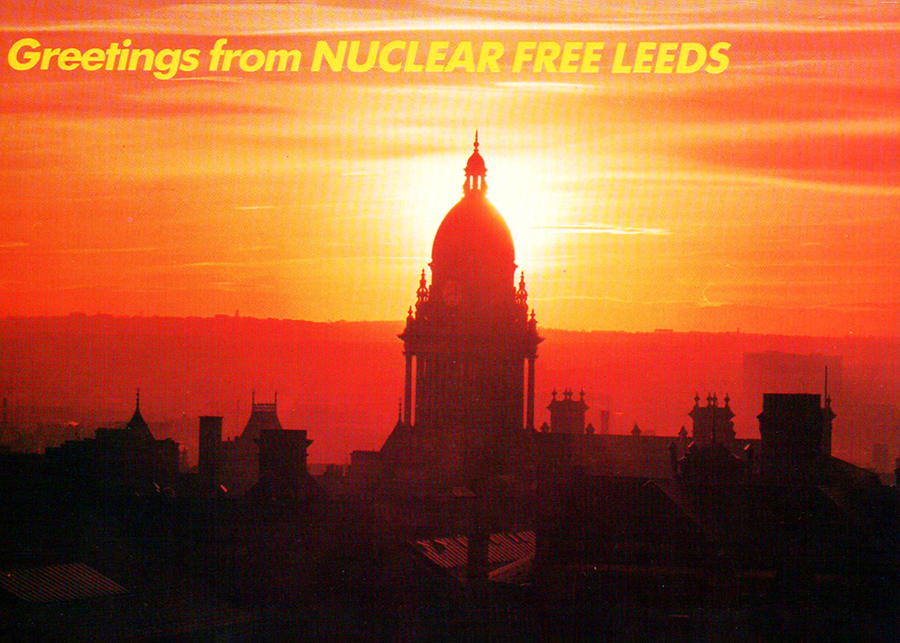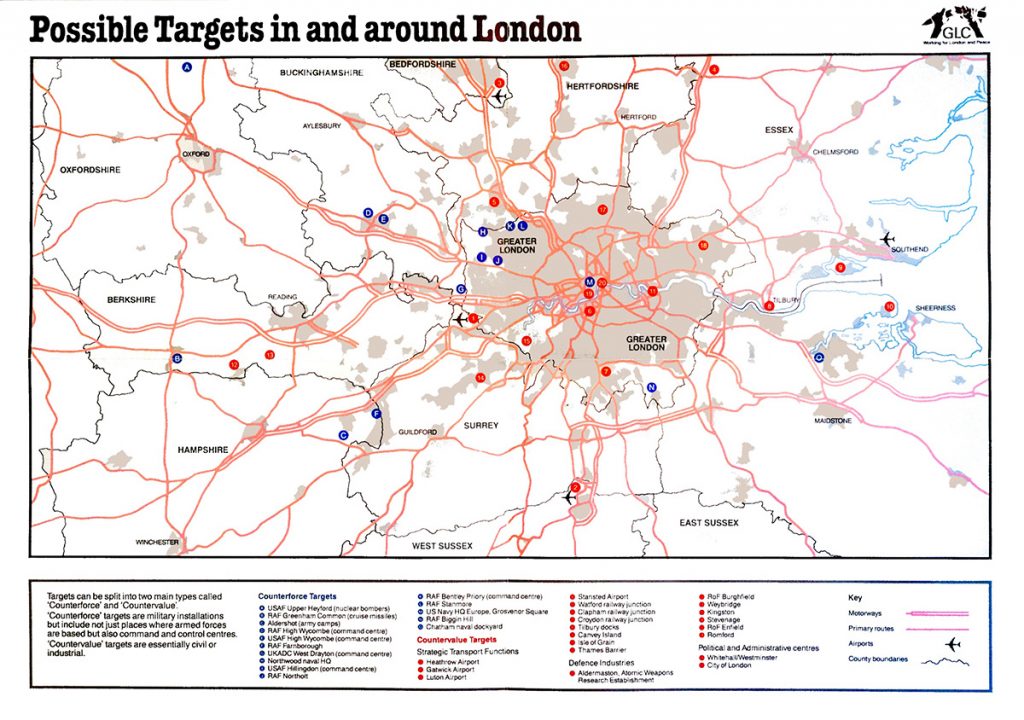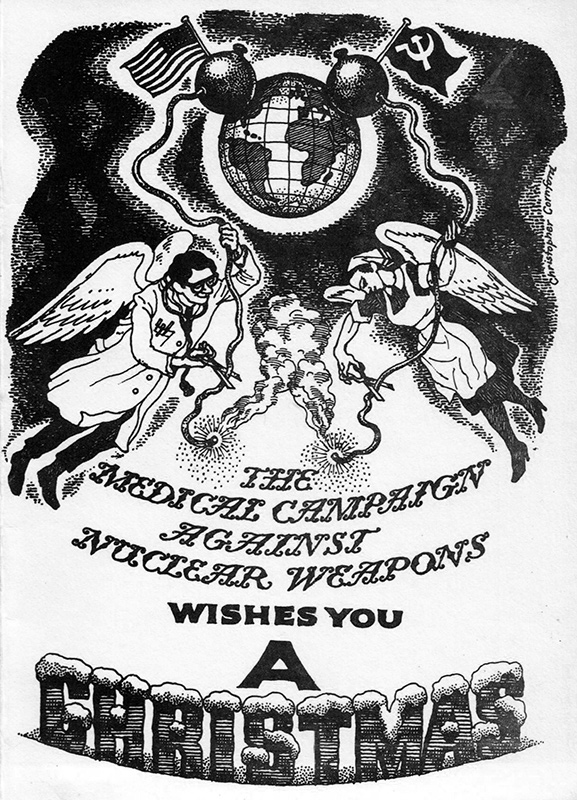Leeds Postcards was founded in 1979, with the intention of using postcards “as a political tool and agent for change”.
They quickly became well-known, producing some iconic work with activist groups such as the Medical Campaign Against Nuclear Weapons (MCANW) and CND branches across the country, and artists including Peter Kennard and Steve Bell. They are still publishing postcards today.
Throughout the 1980s, Leeds Postcards published a number of cards satirising the threat of nuclear war, and celebrating the movement against the bomb, which I’m sharing here (with their permission). I’ve quoted the text from the back of the postcards for some context, as well as the artist and date, where known.
Greetings from Nuclear Free Leeds, unknown artist, 1981
On 30 July 1980 Leeds City Council adopted a resolution from Councillor Michael McGowan which expressed grave concern at the build up of nuclear weapons and agreed to contact other cities about action against the nuclear threat.
On 24 June 1981 Leeds became a Nuclear Free Zone. the City Council promotes peace education and peace exhibitions, and published Leeds and the Bomb to inform the public of the effects of a nuclear strike on Leeds.
Continue reading this article…






